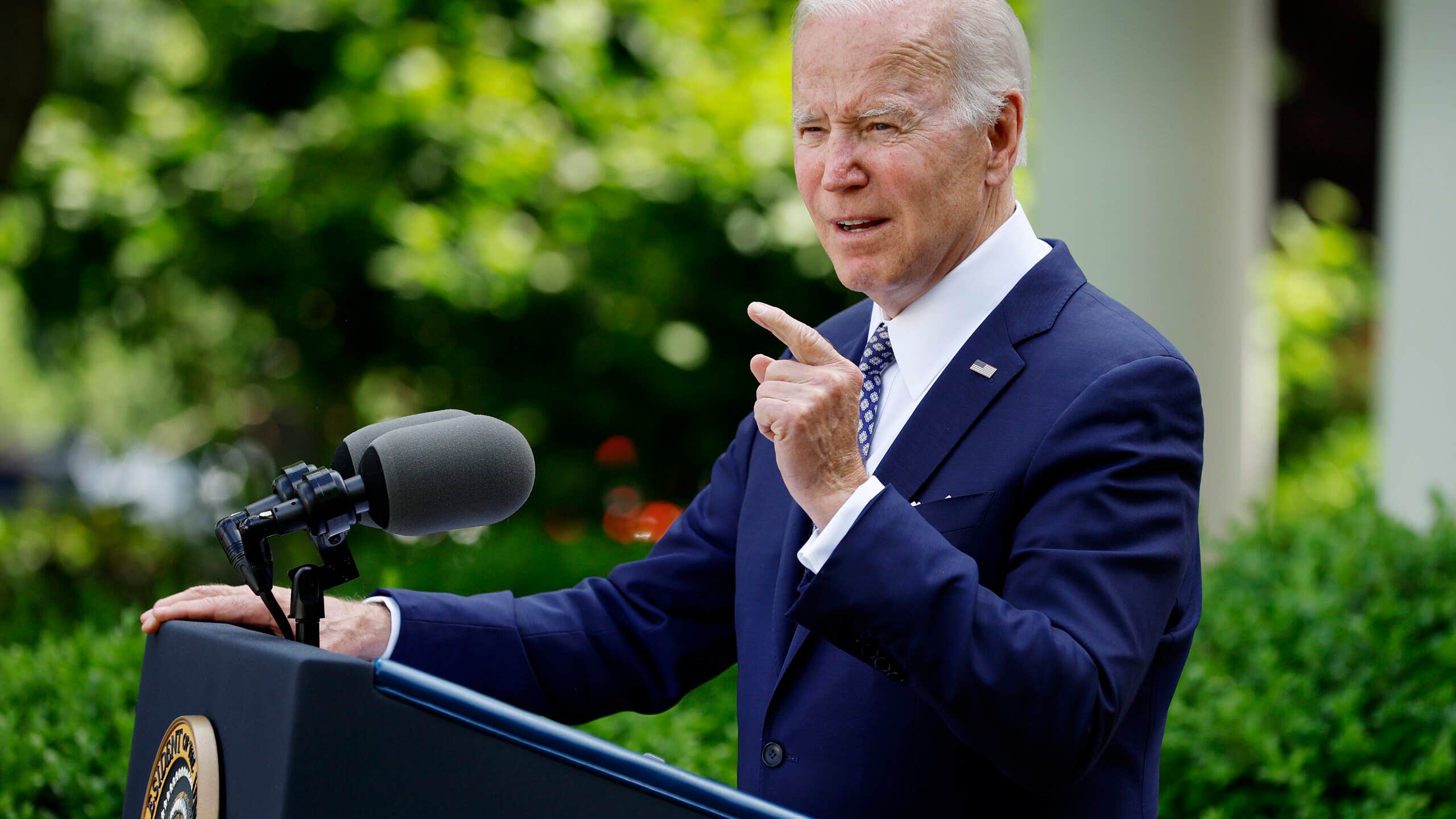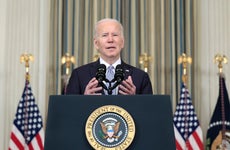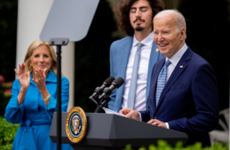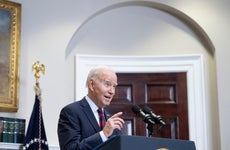President Biden just forgave another $5.8 billion in student debt: Here’s who benefits

The Bankrate promise
At Bankrate we strive to help you make smarter financial decisions. While we adhere to strict , this post may contain references to products from our partners. Here's an explanation for .
President Biden announced another sweeping federal student loan forgiveness policy, wiping out $5.8 billion in debt for 77,700 borrowers. However, only certain borrowers will qualify — specifically those enrolled in the Public Service Loan Forgiveness (PSLF) program.
Today’s changes are the result of a long-standing effort by the Biden administration to fix the federal repayment program. Today, total relief through PSLF now equals $62.5 billion for 871,0000 borrowers.
Public service workers to benefit from additional cancellation
PSLF is a federal repayment program that allows qualifying public servants, such as teachers, nonprofit employees, nurses and firefighters, the opportunity to have their federal loans forgiven after 120 payments. However, before Biden took office, the program was highly scrutinized and largely regarded as flawed, with very few actually achieving forgiveness despite meeting the requirements.
Borrowers eligible for forgiveness through PSLF will receive an email from the Education Department. This email will outline the discharge eligibility and provide any necessary next steps.
“For too long, our nation’s teachers, nurses, social workers, firefighters and other public servants faced logistical troubles and trap doors when they tried to access the debt relief they were entitled to under the law,” said U.S. Secretary of Education Miguel Cardona in today’s press release. “Today, more than 100 times more borrowers are eligible for PSLF than there were at the beginning of the Administration.”
Additional 380,000 will be notified of future forgiveness
The administration’s press release also stressed that borrowers eligible for future PSLF forgiveness will receive a notice from the President. “President Biden will email an additional 380,000 public service workers thanking them for their service and notifying them they are on track to have their debt canceled through PSLF within two years,” the release reads.
In the President’s email, he states, “I hope you continue the important work of serving your community — and if you do, in less than two years, you could get your remaining student loans forgiven through Public Service Loan Forgiveness.”
Cancellation builds on program amendments
Building on President Biden’s promise to bring as much federal student debt relief to Americans as possible, today’s announcement brings about record-breaking levels of forgiveness. Prior to the administration’s continued efforts to amend the PSLF program, only 7,000 borrowers ever received forgiveness — 2 percent of those enrolled.
Through the Higher Education Act, President Biden has been able to provide relief to enrolled borrowers, even though the administration’s previous cancellation bill was struck down by the Supreme Court last year.
New PSLF rules were implemented in April 2022, following a limited PSLF waiver that ended in October 2021. The new rules alter the way that payments toward forgiveness are accounted for, making it easier to achieve forgiveness. The Education Department states that this adjustment is currently underway and will be completed by July 1, 2024.
How to get your student loans forgiven through PSLF
In order for your debt forgiven through PSLF, you must first meet the following requirements:
- Work for a qualifying U.S. government agency (federal, state, local or tribal), a 501(c)(3) nonprofit or be a volunteer for AmeriCorps or the PeaceCorps.
- Have Direct Loans or Direct Consolidation Loans.
- Be enrolled in an income-driven repayment plan.
Borrowers who have commercially or federally held FFEL Loans will need to apply to consolidate these loans under a Direct Consolidation Loan by April 30, 2024 to be eligible for credit under the payment count adjustments.
If you think you qualify, apply for the program through the Department of Education’s website. You can also request a Temporary Expanded PSLF form if some — or all — of your payments weren’t made on a qualifying PSLF repayment plan. Complete this form as soon as possible, as you may be eligible for loan forgiveness under this temporary measure.
Related Articles

Biden launches “Most affordable student loan plan ever” weeks before payment pause ends

New Biden student debt plan could forgive up to $20,000 in interest for millions

Biden administration to forgive over $6 billion in student debt for The Art Institutes’ students

Biden administration forgives $1.2 billion in student loans through SAVE Plan